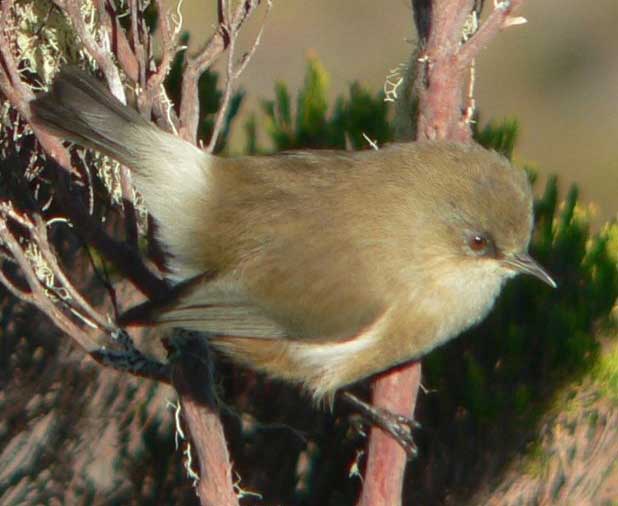
Zosterops borbonicus borbonicus (*)
Superregnum: Eukaryota
Regnum: Animalia
Subregnum: Eumetazoa
Cladus: Bilateria
Cladus: Nephrozoa
Superphylum: Deuterostomia
Phylum: Chordata
Cladus: Craniata
Subphylum: Vertebrata
Infraphylum: Gnathostomata
Superclassis: Tetrapoda
Cladus: Reptiliomorpha
Cladus: Amniota
Classis: Reptilia
Cladus: Eureptilia
Cladus: Romeriida
Subclassis: Diapsida
Cladus: Sauria
Infraclassis: Archosauromorpha
Cladus: Crurotarsi
Divisio: Archosauria
Subsectio: Ornithodira
Subtaxon: Dinosauromorpha
Cladus: Dinosauria
Ordo: Saurischia
Cladus: Theropoda
Cladus: Neotheropoda
Infraclassis: Aves
Ordo: Passeriformes
Subordo: Passeri
Infraordo: Passerida
Superfamilia: Sylvioidea
Familia: Zosteropidae
Genus: Zosterops
Species: Zosterops borbonicus
Subspecies: Z. b. alopekion - Z. b. borbonicus - - Z. b. xerophilus
Name
Zosterops borbonicus (Boddaert, 1783)
References
Table des Planches Enluminéez d'Histoire Naturelle de M. D'Aubenton. p. 42
Vernacular names
English: Mascarene White-eye
suomi: Maskareenienrilli
français: Oiseau blanc
The Réunion grey white-eye (Zosterops borbonicus) is a small passerine from the family Zosteropidae,[1] which is native to the islands of Réunion.[2]
Taxonomy
The taxon mauritianus, by most authorities previously considered a subspecies, is now usually considered a separate monotypic species, the Mauritius grey white-eye, (Zosterops mauritianus). Together, both species were called Mascarene white-eye.[3]
There is some uncertainty about the number of subspecies on Réunion, with most authorities only accepting a single, the nominate (Z. b. borbonicus), while some also accept Z. b. alopekion, and Z. b. xerophilus. When only a single Réunion subspecies is accepted, alopekion and xerophilus are considered to represent morphs of the nominate.
Description
It has a length of 9.5 cm. Its plumage exhibits a colour morph which varies from gray to brown. The rump is coloured conspicuous white, the rest of the body is blue grey. The legs are nearly blackish. There is also a conspicuous ring of white feathers around the chestnut coloured eyes.
Biology
It inhabits woodlands, forests, and gardens. It is the only endemic bird from Réunion which has adapted to man-made conditions. Its diet consists of insects, fruits and nectar. It is also the pollinator for orchids like Angraecum striatum or the endemic Trochetia species. It moves often in small groups from six to twenty birds in search of food. They are very noisy. The breeding period is in the southern summer. The female lays two to four pale blue eggs in a cup-shaped nest which is padded with plant material.
References
del Hoyo, J.; Elliot, A. & Christie D. (editors). (2008). Handbook of the Birds of the World. Volume 13: Penduline-tits to Shrikes. Lynx Edicions. ISBN 978-84-96553-45-3
Gill F. and Donsker D. (eds), Family Zosteropidae, in IOC World Bird Names (ver 6.2), International Ornithologists’ Union, 2016. URL [1]
Otto Finsch: Zosteropidae (Volume 15), 1901.
Bibliography
France Staub: Birds of the Mascarenes and Saint Brandon. LABAMA HOUSE, Port Louis, Mauritius, 1976.
France Staub: Fauna of Mauritius and associated flora. Précigraph Limited, Port Louis, Mauritius, 1993.
Claire Micheneau, Jacques Fournel & Thierry Pailler: Bird Pollination in an Angraecoid Orchid on Reunion Island (Mascarene Archipelago, Indian Ocean). Annals of Botany 97: S. 965–974, 2006 doi:10.1093/aob/mcl056 PDF fulltext[dead link]
Retrieved from "http://en.wikipedia.org/"
All text is available under the terms of the GNU Free Documentation License

